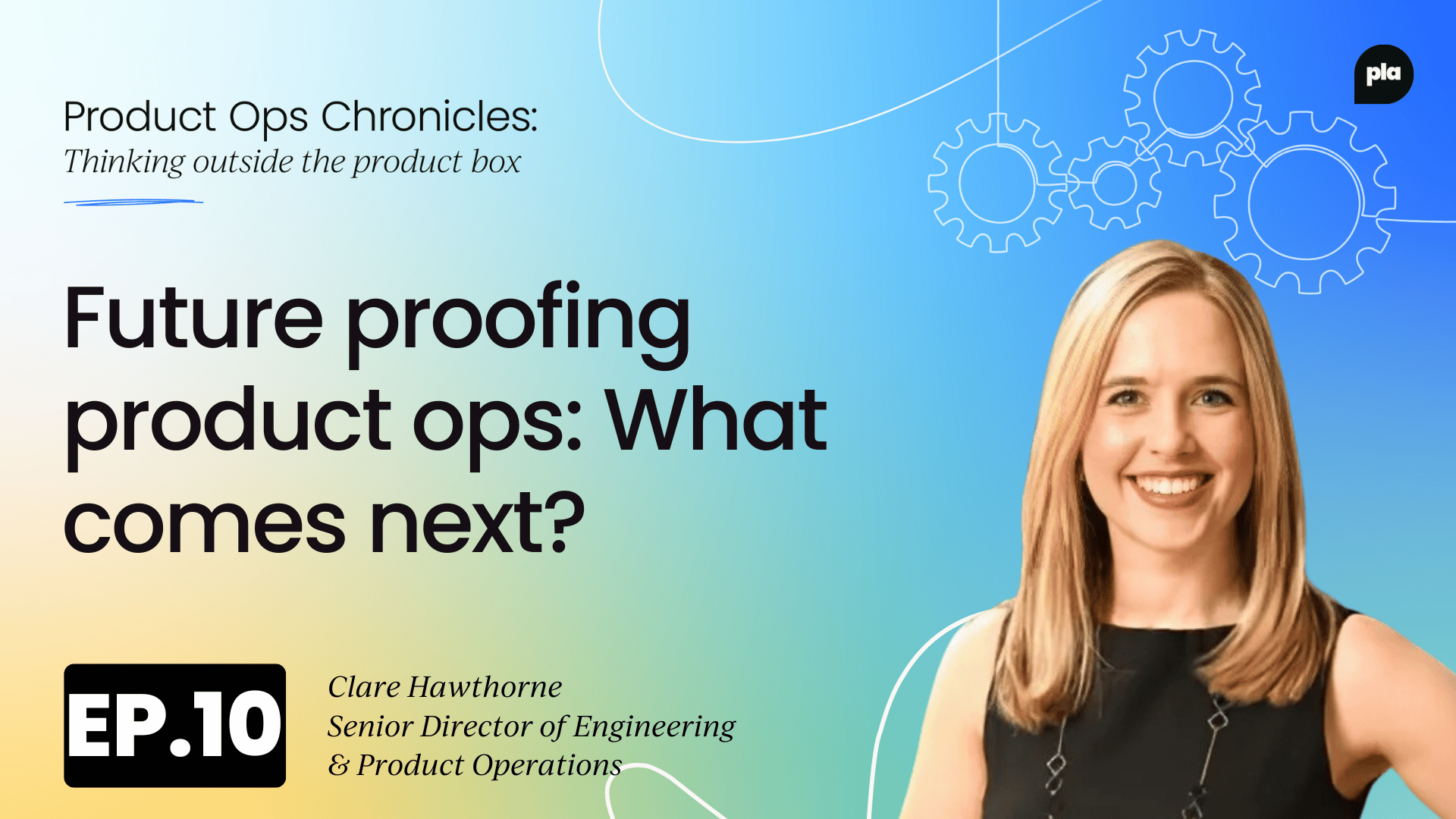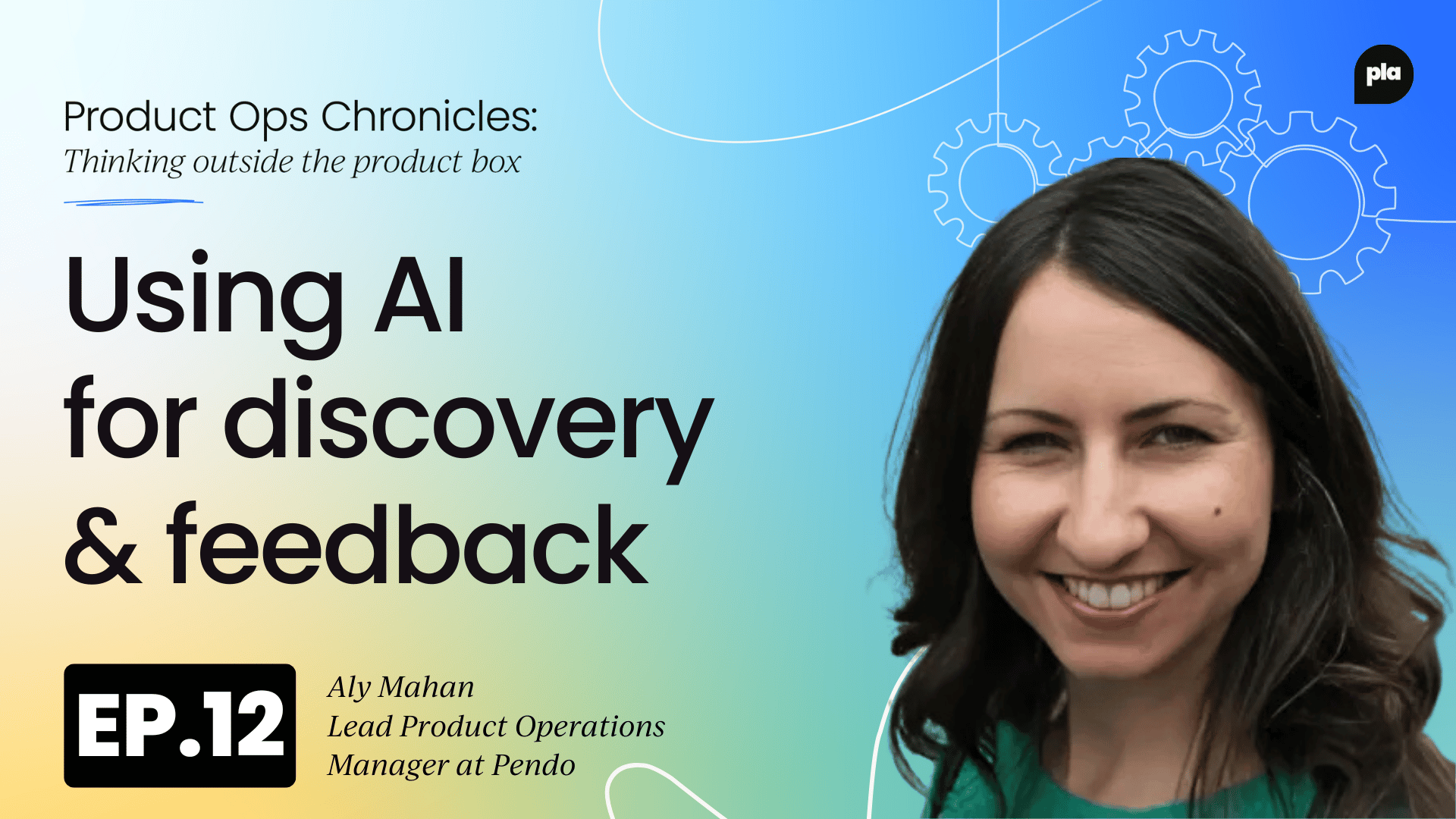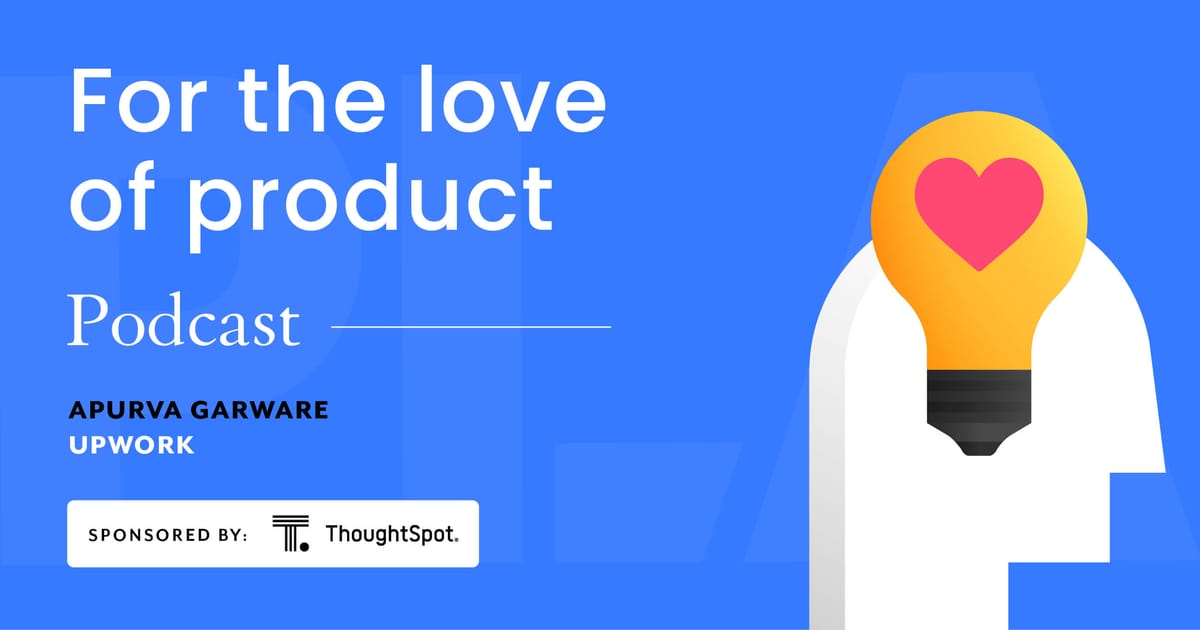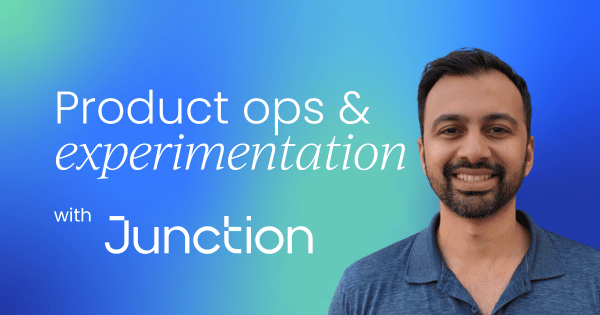Modern operations leaders are stepping out of the back office and into key roles that drive product experimentation and rapid innovation.
In product-led organizations, the velocity of experimentation can make or break success. The faster a product team can test ideas and learn from users, the quicker they can iterate and improve the product.
Yet all too often, these teams hit roadblocks: data is siloed, deployments are slow, or there’s uncertainty about how to run a proper A/B test. This is where modern product operations (ops) leaders step in.
No longer confined to behind-the-scenes support, ops is now a key driver of scalable, repeatable experimentation infrastructure that empowers product teams to move with agility.
As the Head of Operations at Junction (formerly Vital), and having led ops and growth at Instacart, Nova Pioneer, and AllStripes, I’ve witnessed first-hand how the right operational framework can turbocharge product experimentation.
That experience taught me a simple truth: when ops is aligned with product goals, the entire organization can experiment and execute faster, with confidence.
Product experiments aren’t just side projects; they’re a vital part of scaling a product-led growth company. I’ve seen even a small tweak (say, repositioning a value proposition) drive a double-digit uplift in results when properly tested.
Harnessing those kinds of wins consistently requires an “experimentation engine” under the hood – and ops leaders are the engineers who build and tune that engine.
From support function to experimentation champion
For years, product operations was seen as a support function, or, the team that kept the lights on and handled logistics while others built the product. In a product-led era, this mindset is changing.
Operations leaders are emerging as experimentation champions who proactively enable product innovation and growth. The first step in this shift is redefining what “good operations” means for your company.
As I wrote in my Forbes article, “Many companies rush to hire ops talent without first deciding what ‘good operations’ actually looks like.” In other words, don’t bring on ops people without a clear vision for how they will drive value.
In a product-led organization, I recommend operating like a high-growth startup, where the value is measured in speed and adaptability.
Great ops teams align their objectives directly with product outcomes – for example, reducing the time it takes to go from idea to live experiment, or increasing the percentage of product decisions that are backed by data.
Before I made my first operations hire at one startup, I sat down with leadership to define success: we decided that if our ops processes were working, our product squads would be able to run experiments weekly and make decisions confidently based on the results. That clarity became our north star for ops.
By positioning product ops as a strategic partner from day one, you give ops leaders a seat at the table in shaping how products are built and improved.
Instead of simply reacting to requests, Ops can anticipate needs – say, spotting a bottleneck in the release process that might slow down experiments – and fix it proactively. This strategic posture turns Ops into an engine for growth rather than a cost center.
When leaders champion a culture of experimentation and provide the means to do it safely and efficiently, they transform the company’s attitude: experimenting becomes everyone’s default mode of working, not an afterthought or a risk to be feared.

Building a scalable experimentation infrastructure
Once the role of product ops is defined around enabling fast learning, the next step is building out the infrastructure to make rapid experimentation possible.
Think of this as laying down the rails on which quick experiments can run smoothly.
It’s a combination of technology, process, and people. The goal is to make running a test almost as easy as pushing a button – and to ensure those experiments are trustworthy and repeatable at scale.
There are a few key components to consider when constructing this experimentation engine:
Feature flagging and release tools
Implement systems that allow product teams to toggle features on/off for segments of users and run A/B tests without heavy deployments.
Feature flag platforms and progressive rollout tools (for example, those used for beta features) let you expose new ideas to a small user cohort, gather data, then scale up or roll back quickly based on results.
Unified data and analytics pipeline
Ensure that all product usage data funnels into a centralized analytics platform where experiment results can be measured in real time.
Dashboards should be readily available so teams can monitor key metrics (conversion, retention, etc.) the moment an experiment is live. A single source of truth for data means no waiting on analysis – product managers and designers can see for themselves how users are behaving.

Automated feedback loops
Integrate user feedback channels into the experiment cycle. For example, if you launch a new feature to 10% of users, automatically collect qualitative feedback from that group (via in-app surveys or targeted interviews) and feed it back to the product team. This way you capture not just what users do, but why – allowing for faster iteration on the idea.
Experimentation playbooks and training
Create standardized guidelines for running experiments – from hypothesis templates to statistical significance thresholds – and train teams on them.
A shared playbook (possibly maintained by product ops or growth ops) ensures experiments are run consistently and lessons are documented.
When every team uses the same “experiment design -> test -> analyze -> learn” process, results become comparable and repeatable.

Repeatable processes
With these pieces in place, experimentation becomes a scalable, repeatable process rather than a one-off fire drill. A new product manager or an intern can plug into the existing system and start testing ideas on day one, because the tools and protocols are there.
Just as importantly, a well-designed ops infrastructure provides guardrails: it prevents mistakes like accidentally exposing 100% of users to a buggy variant, and it ensures data accuracy (so teams don’t make decisions on faulty analytics).
In ops, we often say our job is to make it easy to do the right thing and hard to do the wrong thing. When it comes to experimentation, that translates to setting up guardrails that let teams move fast without breaking things.
Even famously experiment-driven companies continually invest in their infrastructure. Booking.com, for instance, has had to “continuously revamp its testing infrastructure to support new kinds of experiments” as their program grew.
The takeaway: if you build for scale early, your organization can keep up a rapid pace of experimentation even as you gain more users, more data, and more complexity. Don’t wait until experiments bog down to realize you need better tools; bake it into your ops roadmap from the start.

Turning data into fast decisions
An experiment is only as valuable as the decision it informs. Accelerating product experimentation isn’t just about running tests quickly – it’s about learning quickly and acting on those learnings.
Here, too, operations plays a pivotal role. Ops teams can shorten the feedback loop from data to decision in several ways.
Ensure data is reliable
First, by ensuring that experiment data is reliable and immediately accessible, ops eliminates the analysis lag. In many companies, teams run an A/B test and then wait days or weeks for an analyst to crunch the numbers.
But if ops has set up self-serve analytics and alerting, a product manager can see results at a glance and decide within hours whether to iterate, pivot, or scale up a feature.
At Junction, for example, we configured automated reports that trigger as soon as an experiment hits a predetermined sample size. Everyone from product to design gets a Slack notification with the latest metrics.
This kind of ops-driven automation means the moment we have enough data to know if a change moved the needle, the team can huddle and make a call that same day.
Use qualitative insights
Second, ops can help bring qualitative insights into the mix faster. Numbers tell you what happened, but user feedback often tells you why.
If an experiment underperforms, an ops person might quickly pull in related user survey responses, support tickets, or session recordings that shed light on the result – so the team isn’t left guessing about next steps.
By centralizing these insight channels (and making them easily searchable and accessible), ops ensures that decisions are informed by a 360° view of the user experience, not just a dashboard.
It’s the difference between “The conversion rate dropped 5%” and “The conversion rate dropped 5%, and users commented that the new checkout flow was confusing” – the latter leads to a much faster and more targeted response.

Leverage product tools and AI
Finally, consider the leverage of modern tools. We’re in an era where emerging technologies like AI can dramatically speed up analysis.
Imagine feeding your experiment data into an AI assistant that instantly highlights anomalies or suggests which user segment responded best to a new feature – essentially an on-demand data analyst.
That’s not science fiction; these capabilities are quickly becoming reality. Forward-looking ops leaders are already exploring AI-driven analytics to compress the time from experiment to insight.
For example, anomaly detection algorithms can monitor dozens of concurrent experiments and alert the team if something looks off, or machine learning models can predict how an experiment might trend if given more time. By embracing these innovations, Ops can further accelerate the decision-making velocity of product teams.
When Ops has done its job right, deciding the fate of a tested idea becomes almost frictionless. The team has clear data at their fingertips, context from user feedback, and confidence in the validity of the results.
Product decisions – whether to iterate, double-down, or scrap a feature – happen faster and with greater conviction. Instead of drawn-out debates or “let’s wait and see” hesitation, teams can say, “We ran the experiment, we have the data, and here’s what we’re doing next.” That kind of momentum is gold in a product-led organization.

Fostering a culture of continuous experimentation
Tools and data alone won’t accelerate innovation unless people feel empowered to use them. A big part of the product ops leader’s job in a product-led company is cultural: nurturing a mindset where continuous experimentation is the norm. This involves trust, transparency, and a comfort with smart risks.
Lead by example
Ops can lead by example here. I look for ops team members with a builder’s mindset – people who embrace ambiguity and love solving open-ended problems.
Why? Because they model the curiosity and resilience that experimentation requires.
If the Ops team approaches a challenge with “Let’s test it and learn” (rather than playing it safe or saying “no” by default), it inspires everyone else to follow suit.
In my aforementioned Forbes article, I highlighted that mindset as essential for early-stage ops hires, and it holds just as true at scale. When Ops folks demonstrate a bias for action and learning, it becomes contagious across product, engineering, and beyond.

Frame failure as a learning opportunity
Another cultural lever is how we frame “failure.” Not every experiment will boost a metric; in fact, many won’t.
Ops leaders can help create a blameless culture where a failed test isn’t seen as a failure at all, but as valuable information. One practice I’ve found useful is the post-experiment debrief.
After each significant experiment, ops facilitates a quick debrief document or meeting on what was learned and what we’ll do next.
Crucially, this is shared openly across teams. When people see that even a negative result yields insight (and that no one is getting reprimanded for a dip in numbers), it reinforces that the company genuinely values learning.
Over time, teams become bolder and more creative, because they know ops has their back and leadership won’t shoot the messenger if an idea doesn’t pan out.

Break down silos
Ops can also help break down silos in experimentation. Often, growth teams run tests separate from core product teams, or marketing runs experiments that R&D never hears about.
A strong ops function will encourage cross-functional experiments and knowledge sharing.
At times, my team has played connector by bringing a product manager, an engineer, and a data scientist together to brainstorm an experiment, ensuring all perspectives are in the mix.
We’ve also built an internal wiki for experiment results, accessible to everyone. This way, insights from one team’s test (say, a marketing campaign experiment) can inform another team’s roadmap (maybe the product onboarding flow).
Such transparency elevates the whole organization’s experimentation IQ and prevents “reinventing the wheel” on tactics that were already tried.
Ultimately, cultivating a culture of continuous experimentation means making sure everyone, from the CEO to a new intern, understands the why behind it.
Ops can communicate the wins (e.g. “Remember that experiment on our onboarding flow? It increased new-user retention by 15%, which helped us hit our quarterly goal”); Ops can also normalize the setbacks (“We tested X and it didn’t move the needle, which told us to focus elsewhere – a valuable discovery”).
By consistently broadcasting these stories and lessons, ops keeps experimentation at the forefront of the company’s values. People take calculated chances because they see the payoff, and they know the organization is committed to learning at every step.

Final thoughts
In a product-led organization, speed of learning is a serious competitive advantage. Operations leaders are uniquely positioned to amplify that advantage.
By stepping beyond their traditional remit and becoming architects of experimentation, Ops leaders turn hypothesis-testing into a scalable, repeatable habit. We enable product teams to spend more time innovating and less time wrangling processes or waiting on approvals.
The payoff for this product ops-driven acceleration is huge: faster feedback loops mean happier users or customers (because their feedback is heard and acted on), more confident product decisions, and ultimately a more innovative company.
Product operations is all about leverage – finding the small hinges that swing big doors. And an organization’s capability to experiment rapidly and responsibly is one of those hinges.
If you’re an operations leader in a product-led business, seize this opportunity. Be the champion of experimentation.
Tear down the barriers that slow your product teams, build the infrastructure that lets them test and learn at scale, and nurture the culture that encourages bold bets.
Do that, and you won’t just be supporting product success – you’ll be actively driving it, at a pace your competitors will struggle to match.




 Follow us on LinkedIn
Follow us on LinkedIn












